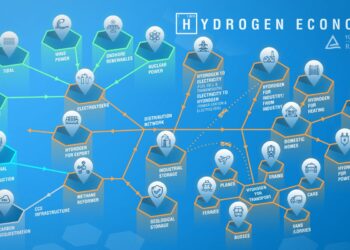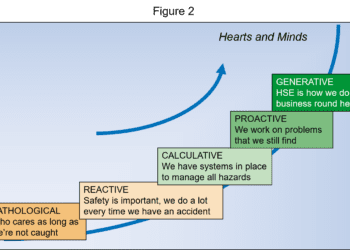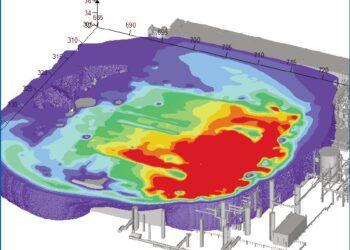Proportionality – avoiding ‘one size fits all’ solutions
Proportionality is a fundamental attribute of modern risk management. But what do we mean by proportionate? Put simply, we should target our efforts and resources into those facilities, and hazards, where the risk is greatest and not expend unwarranted levels of effort where risks are low.
This article explores three facets of proportionality:
1. The level of effort and detail put into analysing risk.
2. The time, cost and trouble expended on actually reducing risk.
3. The resources allocated during operations to manage risk.

Level of detail
The goal of any good risk assessment is to provide sufficient information to help stakeholders make robust risk-informed decisions. The higher the level of risk or magnitude of the consequences, the greater the certainty that is needed from the analysis. For example, the assessment of a nuclear power station with the potential for widespread offsite consequences necessitates more comprehensive and advanced analyses than an offshore oil platform where the impact is largely localised, which in turn would require more detail than an onshore chemical site with a small inventory of flammable materials.
In all cases, however, the key is to begin analyses at as high a level as practical and only perform more detailed evaluations in areas where the additional effort will significantly help decision-makers. In general, the more detailed the analysis the greater the confidence and the more certain the conclusions, but the greater the resources invested.
As you can imagine, this is not quite as straightforward as it might first appear. For instance, complex analysis can give the appearance of robustness but if it is based on unfounded assumptions or large uncertainties in data, then the old adage “garbage in, garbage out” will apply. Too much analysis can paralyse an organisation, as decision-makers wait for it to arrive or are overwhelmed by options or reams of detailed results. Moreover, excellent decisions to reduce risk can often be made on the basis of surprisingly simple analysis, or even by judgement and common sense.
Reducing risk
The concept of proportionality should already be familiar to anyone who has used the principle of ALARP – As Low As Reasonably Practicable. The ALARP principle sits at the heart of risk management in the UK, as well as a number of other countries and many global corporations. The principle is a ‘gift’ to decision-makers because it recognises that whilst risk reduction is desirable it is not always warranted.
For example, hazards found to lie in the ‘tolerable if ALARP’ risk region will require further risk reduction measures unless the money, time and trouble (the ‘sacrifice’) involved in implementing them can be shown to be grossly disproportionate to the benefit gained.
Many organisations develop a sliding scale to determine gross disproportion, whereby the higher the risk the greater the factor and hence the more likely it is that additional risk reduction measures will be adopted.
Managing risk
It is common in the major hazard industries to specify the required safety performance of engineered systems and their human operators. For instance, the importance of a safety-critical system that provides the primary barrier in preventing a major accident is clearly higher than a system which would only be called upon after several other independent barriers had already failed. This concept drives a proportionate approach whereby the higher the required safety performance of a system, the greater the frequency and depth of assurance activities such as design substantiation, commissioning, maintenance, inspection and testing, as well as verification activities like auditing and management review.
This approach ensures that design, operations and maintenance resources allocated during the facility’s lifetime are focused on where risks are highest.
Conclusion
The concept of proportionality should drive the level of detail of risk analysis, the resources expended on risk reduction measures and the ongoing resources allocated to establish and maintain safety system performance. Proportionality is a very powerful tool in the effective management of risk, avoiding ‘one size fits all solutions’. In short, proportionality helps funnel resources where they are needed to manage the risks that matter.
This article first appeared in RISKworld Issue 24








